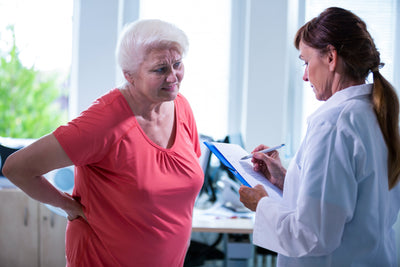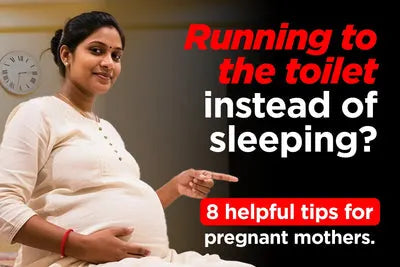Introduction
Most women mistake urinary incontinence in menopause as a sign of their body ageing.“Urine leaks first started after I delivered my daughter, but that was like 20 years ago. It eventually stopped. But now, it has started again. My husband jokes, ‘Looks like age has come for you, after all.’”
“I’ve been a dancer for 40 years. Control over my body was second nature to me. But one day, someone cracked a joke mid-performance. Oh my god! Urine started running down my leg as I was laughing. I was horrified. Ageing was taking control of my body.”
“I honestly thought I had diabetes. Why else was I waking up a hundred times a night to pee? My father had diabetes at the age of 85; perhaps women age faster? So, I cut out sugar, stopped drinking water in the evenings, even got my blood tested. Everything came back normal.”
Three women. Three different stories. All believed it was just age catching up.
But the truth? Menopause. Urinary incontinence is a common and natural symptom while transitioning through it.
When we think of menopause, we usually think of hot flushes, mood swings, erratic periods, and sleepless nights. But not urinary incontinence. It’s not a rare symptom, just rarely talked about.
Studies show:
-
20–30% of younger women
-
30–40% of middle-aged women
-
Up to 50% of older women experience some form of urinary incontinence.
And menopause only increases those chances.
In this article, we’ll explore the link between menopause and urinary incontinence, the types, causes, and treatment options.

Understanding Menopause-Related Urinary Incontinence
Usually known as Genitourinary Syndrome of Menopause (GSM), menopause-related urinary incontinence is a common problem in postmenopausal women owing to hormonal shifts, particularly a decrease in oestrogen. Oestrogen plays a vital role in maintaining the strength and elasticity of the urinary tract. During menopause, the decreased levels of oestrogen can affect bladder and urinary tract health, which leads to symptoms like urinary urgency, frequent urination, and urinary incontinence.
The symptoms of menopause and bladder control are often treatable. Consequently, recognising and addressing menopause urinary incontinence is crucial.
Types of Urinary Incontinence in Menopausal Women
Urinary incontinence can take many forms during menopause. These include:
1. Stress Incontinence
What it is:
Leakage of urine during physical activities that put pressure on the bladder, like coughing, sneezing, laughing, or lifting.
Why it happens during menopause:
Drop in estrogen leads to weakening of the pelvic floor (lower abdominal) muscles and urethral (bladder) sphincter.
2. Urge Incontinence (Overactive Bladder)
What it is:
A sudden, intense urge to urinate followed by involuntary leakage. You may also feel the need to urinate more frequently, even at night.
Why it happens during menopause:
Thinning of the bladder lining and reduced estrogen can cause increased bladder sensitivity.
3. Mixed Incontinence
What it is:
A combination of stress and urge incontinence. You may leak both during physical activity and feel strong, sudden urges to urinate.
Why it happens during menopause:
As both muscle strength and bladder control decline, symptoms of multiple types can overlap.
4. Overflow Incontinence
What it is:
The bladder doesn’t empty properly, causing frequent dribbling or a constant feeling of fullness.
Why it happens during menopause:
Though less common, hormonal changes can disrupt bladder signaling and muscle coordination, leading to incomplete emptying.
Management and Treatment Options
As we mentioned earlier, menopause and bladder control symptoms are often treatable. So is urinary incontinence in menopause.
-
Pelvic Floor Exercises (Kegels):
Kegel exercises can help manage urinary incontinence, especially during menopause, by strengthening the pelvic floor muscles that support the bladder and urethra. These exercises can also help improve overall pelvic floor health and function.
To perform these exercises,
-
First identify the floor muscles by trying to stop the flow of urine mid-stream.
-
Squeeze the muscles and hold it for 3-5 seconds.
-
Gradually, release the muscles and relax for 5 seconds.
-
Repeat this 10 times, thrice daily.
-
Lifestyle Changes:
To manage menopause and urinary incontinence, focusing on lifestyle changes like bladder training and dietary modifications can be helpful. These changes can help reduce the urge to urinate and minimise leakage.
Lifestyle changes that can help manage menopause urinary incontinence include:
-
Bladder Training:
Keep a track of your urination behaviours, including frequency and the amount you urinate. This helps find patterns and make a schedule.
Try to pass urine at regular intervals, even if you don't feel the urge to pee. Gradually increase the time between visits to the toilet, aiming for 2-4 hours.
-
Dietary Modifications:
Maintaining weight with a healthy diet and regular exercise can help reduce pressure on the bladder and pelvic floor.
Stay hydrated, but be mindful of the quantity of water you drink, as it can lead to excessive urination.
Avoid or reduce the intake of caffeine, alcohol, sugary foods, and carbonated drinks, as these can irritate the bladder.
-
Medications:
Certain medications can be considered helpful for reducing symptoms of urinary incontinence in menopause. For an overactive bladder, anticholinergic drugs can be prescribed to treat UI that can help stabilise muscle contractions. However, other medications like Duloxetine are also available that doctors may prescribe to treat urinary incontinence. It’s always good to talk to your doctor before deciding if medication is even needed.
-
Surgery:
Surgery is generally considered the last option for treatment if the condition is not managed by other options. Sling surgery, using mesh or tissue, is a common surgical option for treating stress incontinence.
-
Absorbent Products:
Sometimes, menopause-induced incontinence goes away with time. Sometimes, it stays. That’s why, since 2000, Friends has been making adult diapers for menopausal women.
Whether it’s a light trickle, occasional leaks, or more frequent episodes, Friends Adult Diapers offer protection that sanitary pads simply can’t match. They’re super-absorbent, gentle on the skin, and designed for all-day comfort and movement.
Friends is proud to stand by the side of over a million Indian women, supporting them through this new chapter.
Conclusion
Menopause urinary incontinence is nothing to be ashamed of. You share this (sometimes painful) transition with women universally. And it’s okay if it gets messy or complicated. It is natural. Always remember: this change is not the end of who you are.
We hope that this article will help you feel more confident and aware as you navigate this transition. You got this!
Product Recommendations
FAQs
Q1. How do you treat urinary incontinence in menopause?
Ans. Urinary incontinence during menopause can be effectively managed through a range of treatments available, including pelvic floor exercises, lifestyle changes, medications, absorbent products like adult diapers for menopausal women and to some extent, surgical procedures.
Q2. Is incontinence a normal part of perimenopause?
Ans. While urinary incontinence during perimenopause is a common symptom due to hormonal shifts, it is not a normal part of perimenopause, and should not be considered an unavoidable consequence.
Q3. Can lifestyle changes help manage menopause-related incontinence?
Ans. Yes, lifestyle changes can significantly help manage menopause-related incontinence, focusing on strengthening pelvic floor muscles, maintaining a healthy weight, and reducing bladder irritants.
Q4. Are there specific products to manage incontinence during menopause?
Ans. Yes, there are specific products available designed to help manage incontinence during menopause, including medications, supportive devices and absorbent products like adult diapers and pads.
Q5. When should I consult a doctor about menopause-related incontinence?
Ans. It is advised to seek medical help if you are experiencing any type of urinary incontinence that is impacting your quality of life.





















